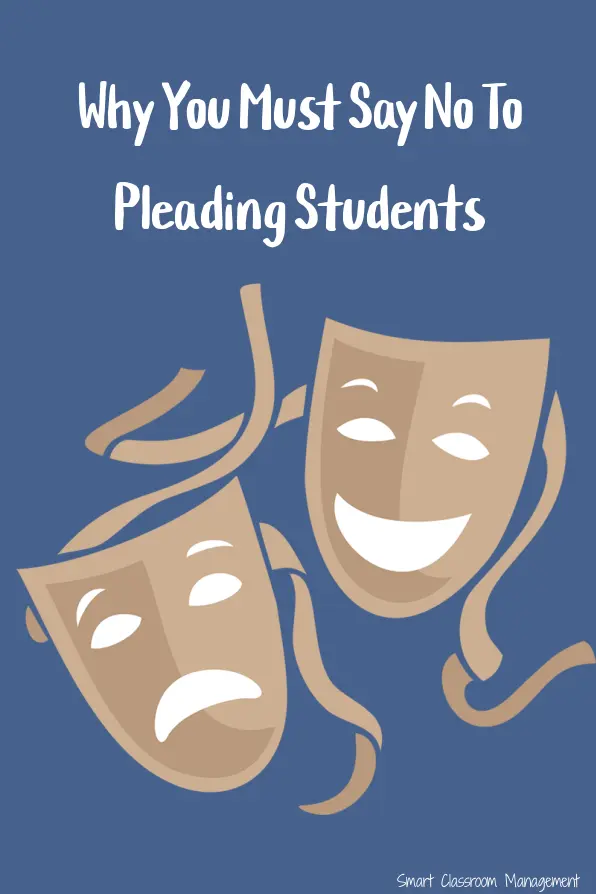Why You Must Say No To Pleading Students Smart Classroom Management
“Can we skip grammar practice just this one time?”
“Can we have an extra day to do our homework?”
“Can we do 10 math problems today instead of 20?”
The requests are followed by a cacophony of sweet and impassioned pleas. “Please Mr. Fluffy! Please! Please! Please!”
And it’s hard to say no.
Because it feels good to make students happy. It’s feels good to hear them cheer and see their excitement. Furthermore, it’s no skin off your hide. At least, not in the moment.
“Well . . . I guess it wouldn’t hurt.”
And for a few seconds, anyway, they love you. They smile and coo and you smile right back. It’s all good. A symbiotical kumbaya.
Oh, but it isn’t. No, no, no. It’s a mistake, you see, that makes your teaching life more difficult.
Here’s why:
You’ll open the floodgates.
Once you give in, even one time, you’ll open the floodgates and every planned activity will feel like a negotiation. You’ll be hit from every side, battered like a lost dingy at sea.
You’ll be stuck defending your decisions, explaining the importance of each lesson, and trying in vain to sell the value of hard work, discipline, and mental challenge.
You’ll battle disappointment.
Merely following your schedule will be a downer to your students. Announcing your math lesson or essay assignment will result not in eager readiness, but in audible sighs.
Anything less than novelty or surprise relief will be a crushing blow. This isn’t an exaggeration. No matter the age, give an inch and they’ll want a mile.
You’ll encourage immaturity.
Maturity is the result of asking more, better, and higher—daily and in every area of scholarship. It’s in pushing greater independence and responsibility.
It’s in ownership, acceptance, and overcoming obstacles and one’s own natural propensity to take the easy way out. Giving in encourages a search for the exit ramp. It encourages excuses and poor effort, which are hallmarks of immaturity.
You’ll send the wrong message.
If you give in to please your students, you’ll send the message that the activity in question is inherently distasteful. It doesn’t have value or reward in and of itself.
Otherwise, you wouldn’t concede to getting rid of it. Their satisfaction, therefore, is in not doing it rather than the opposite. This is a terrible message that undermines your goal of instilling the love of learning and doing hard things.
How to Respond
The best way to respond to pleading is to immediately say no.
Because once you pause, you’re in trouble. So don’t pause. Say no and press on without looking back. Decide ahead of time that whatever you have planned, unless there is an unforeseen and unusual circumstance, you’re going to do.
Never leave a shred of doubt as to the benefit of persistent study and learning.
This is the only way to turn the tide on “kids these days” who don’t care and have little interest in academics. You make them care over time by supporting the great strain for academic excellence.
Giving in subverts appreciation for what is valuable and lasting.
So embrace the hard with urgency. Seek what is challenging. Push toward the unknown. Attack with enthusiasm and can’t-wait excitement.
Show your students that in the midst of struggle is where they’ll find beauty and the greatest joy.
If you haven’t done so already, please join us. It’s free! Click here and begin receiving classroom management articles like this one in your email box every week.

